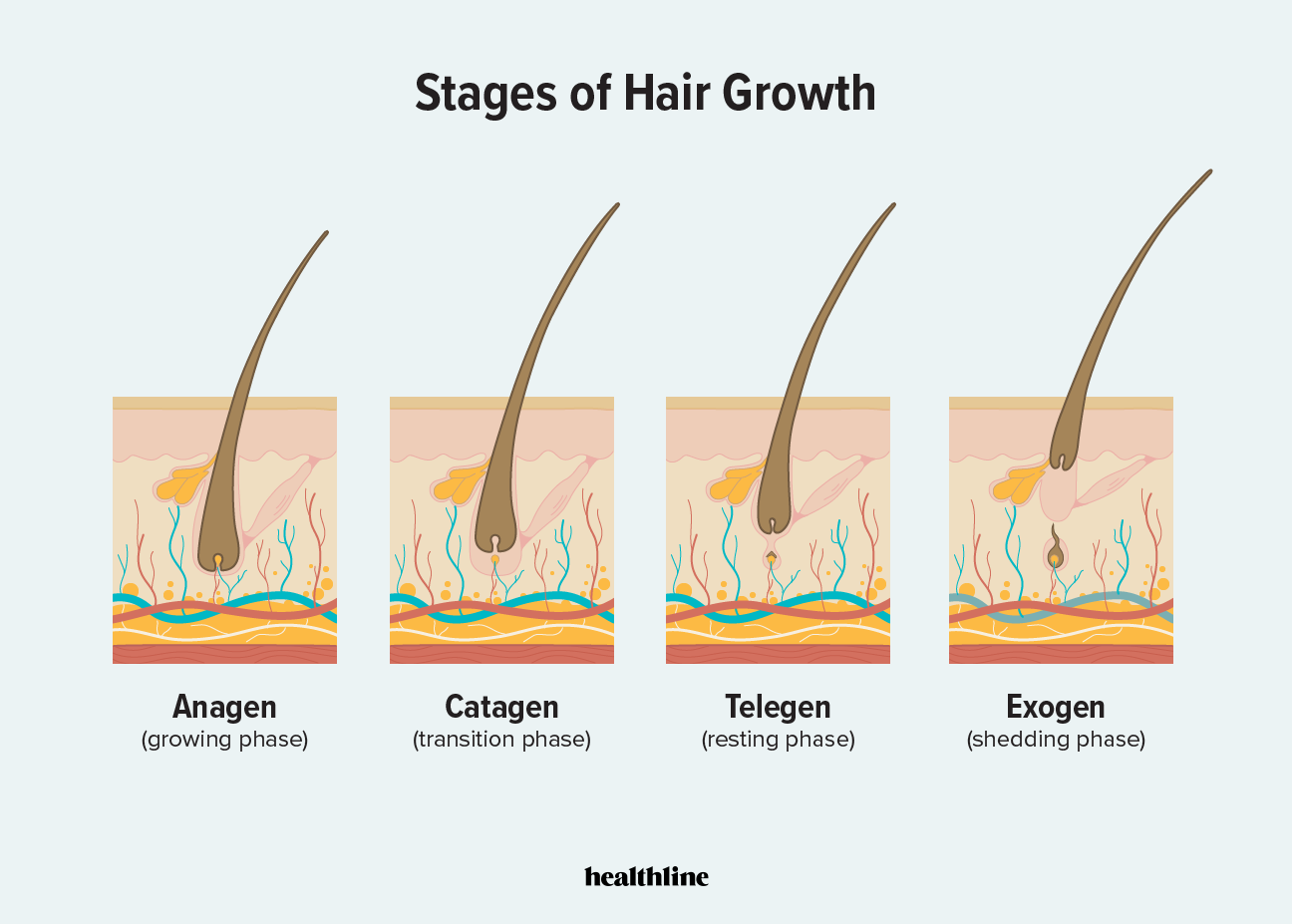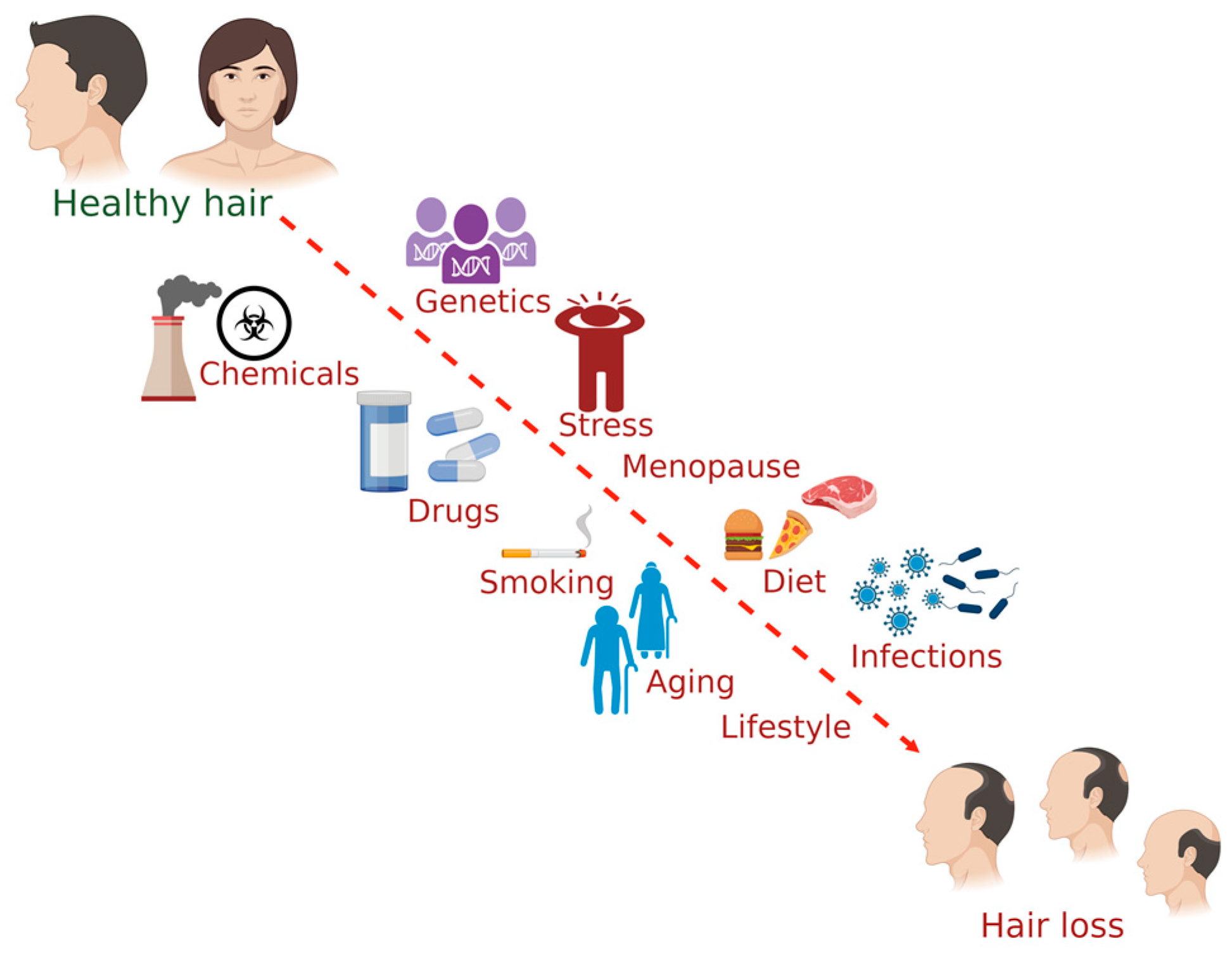“Learn about the hair growth cycle and its four stages: anagen, catagen, telogen, and exogen. Discover tips for promoting healthy hair growth and preventing hair loss.”
Introduction
Understanding the hair growth cycle is fundamental for anyone aiming to maintain or enhance their hair health. This intricate process is not just about hair lengthening but involves a dynamic cycle that affects every strand of hair on your head. In this comprehensive guide, we’ll delve into each stage of the hair growth cycle, explore how these phases influence your hair’s health and appearance, and provide actionable tips to foster healthy hair growth.
The Four Stages of Hair Growth
The hair growth cycle consists of four primary stages, each playing a crucial role in the health and growth of your hair.
- Anagen Phase: The anagen phase, or the growth phase, is where hair actively grows. During this time, hair follicles are highly active, producing new cells that push the hair shaft out. This phase can last between 2 to 7 years, depending on genetic factors and overall health. [Example: On average, hair grows about half an inch per month during this phase.] The length of the anagen phase determines how long your hair can grow before it transitions to the next phase.
- Catagen Phase: The catagen phase is a brief transitional stage lasting about 2 to 3 weeks. In this period, hair growth slows down significantly, and the hair follicle begins to shrink. This phase marks the end of the active growth period and prepares the hair for the resting phase. [Statistic: About 1% of hairs are in the catagen phase at any given time.] The catagen phase is essential for setting the stage for the next stage of hair growth.
- Telogen Phase: The telogen phase is the resting phase of the hair growth cycle, typically lasting around 3 to 4 months. During this phase, hair growth ceases, but the hair remains in place, eventually preparing to shed. [Fact: Approximately 10-15% of hair is in the telogen phase at any time.] This phase allows the hair follicle to rest and regenerate before the new growth cycle begins.
- Exogen Phase: The exogen phase is where hair shedding occurs, and new hair starts to grow. It overlaps with the telogen phase, leading to the release of old hairs and creating space for new growth. [Example: The average person sheds 50 to 100 hairs daily during this phase.] This phase is crucial for maintaining a healthy balance between old and new hair.

The Impact of Hair Follicle Health
Hair follicle health is pivotal for maintaining an effective hair growth cycle. Several factors can influence how well hair follicles function, including:
- Nutrition: A diet rich in essential vitamins and minerals supports healthy hair growth. Key nutrients such as iron, zinc, biotin, and vitamins A, C, and D play a significant role in maintaining follicle health.
- Stress Management: Chronic stress can disrupt the hair growth cycle, leading to hair loss or thinning. Managing stress through techniques like meditation, exercise, and relaxation can positively impact hair health.
- Scalp Care: Regular scalp massages and proper hygiene help improve blood circulation to the hair follicles and remove excess sebum and dead skin cells. This promotes a healthier environment for hair growth.

Promoting Healthy Hair Growth
To support a healthy hair growth cycle and enhance hair health, consider incorporating these practices into your routine:
- Scalp Care: Massaging your scalp regularly can improve blood flow and stimulate hair follicles, promoting hair growth. Use gentle, circular motions to avoid damage.
- Balanced Diet: Incorporate a variety of nutrient-rich foods into your diet, including leafy greens, nuts, seeds, lean proteins, and fruits. These foods provide essential vitamins and minerals that support hair growth.
- Avoiding Harsh Treatments: Minimize the use of harsh chemical treatments, excessive heat, and tight hairstyles that can damage hair follicles and disrupt the growth cycle.

Addressing Hair Loss Solutions
If you’re experiencing hair loss or thinning, understanding the hair growth cycle can help you choose appropriate solutions. Some effective treatments include:
- Topical Treatments: Products like minoxidil can stimulate hair follicles and promote hair regrowth.
- Oral Medications: Prescription medications such as finasteride can help reduce hair loss by inhibiting hormones that contribute to hair thinning.
- Lifestyle Changes: Adopting a healthy lifestyle with balanced nutrition, stress management, and proper hair care can enhance the effectiveness of treatments and support overall hair health.

Conclusion
Understanding the hair growth cycle is essential for maintaining healthy hair and effectively addressing hair loss. By recognizing the stages—anagen, catagen, telogen, and exogen—you can better appreciate how your hair grows and what actions to take to promote optimal hair health. Incorporating proper scalp care, a balanced diet, and effective treatments can help you achieve and maintain healthy, vibrant hair.
